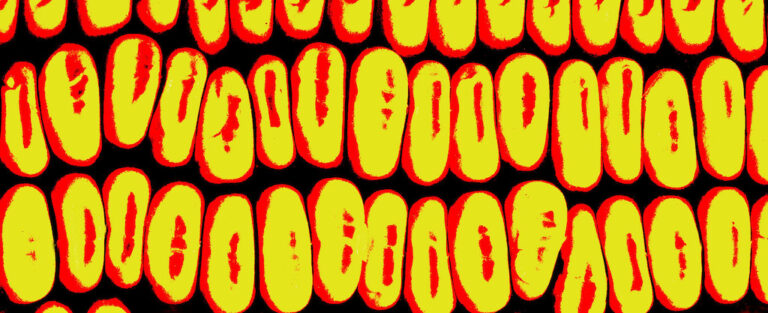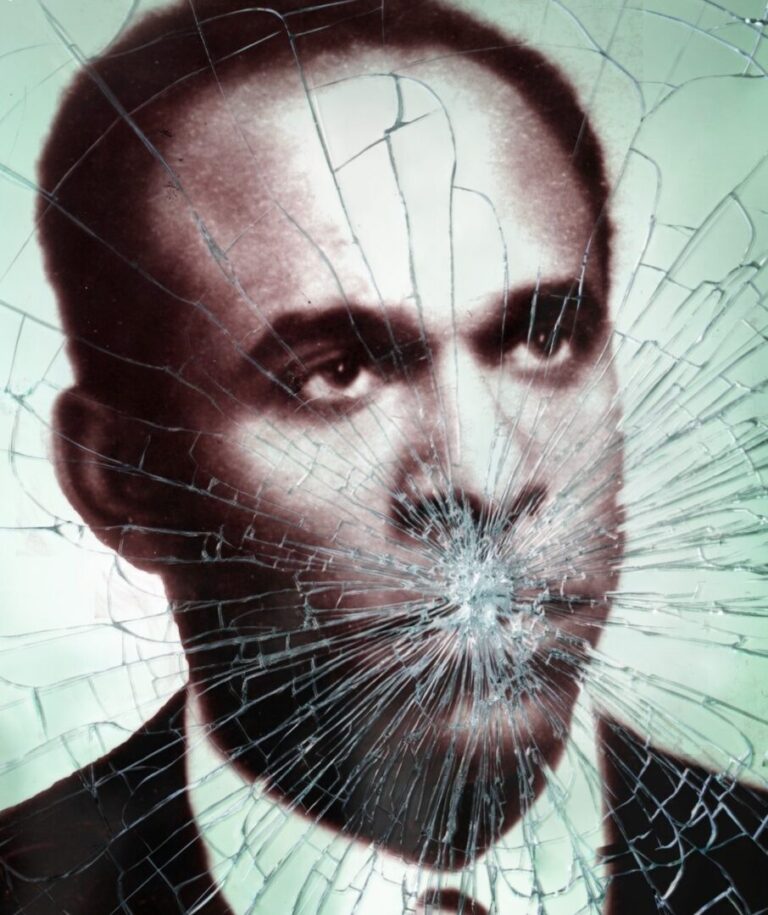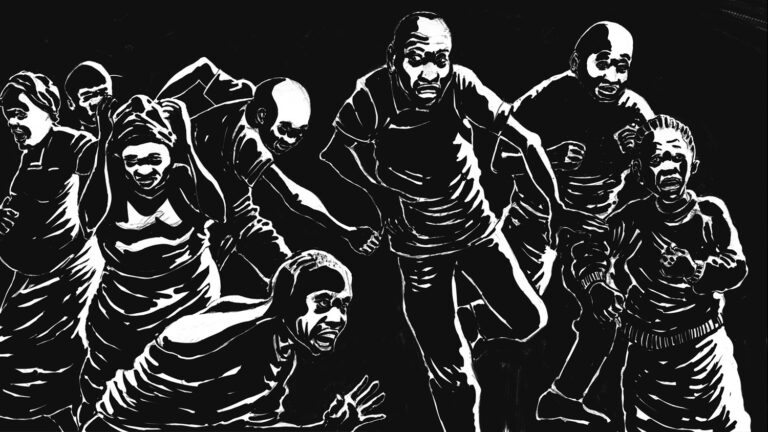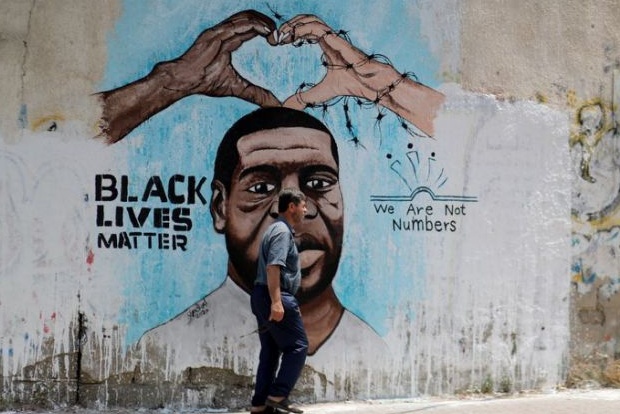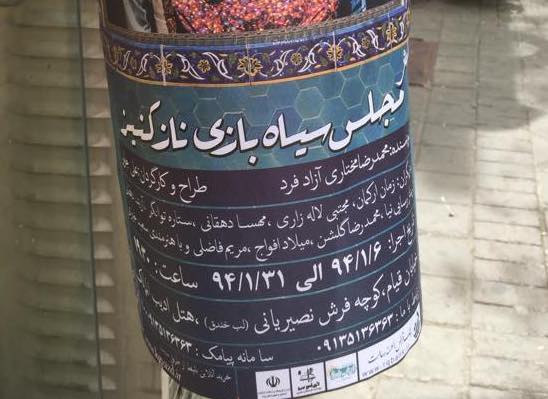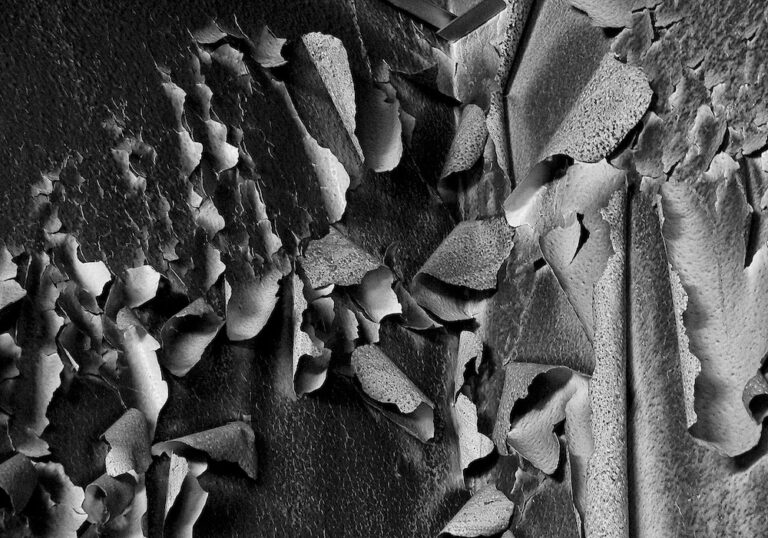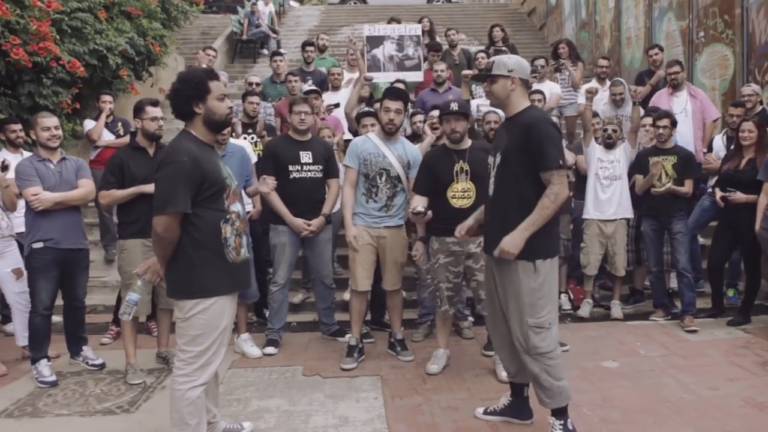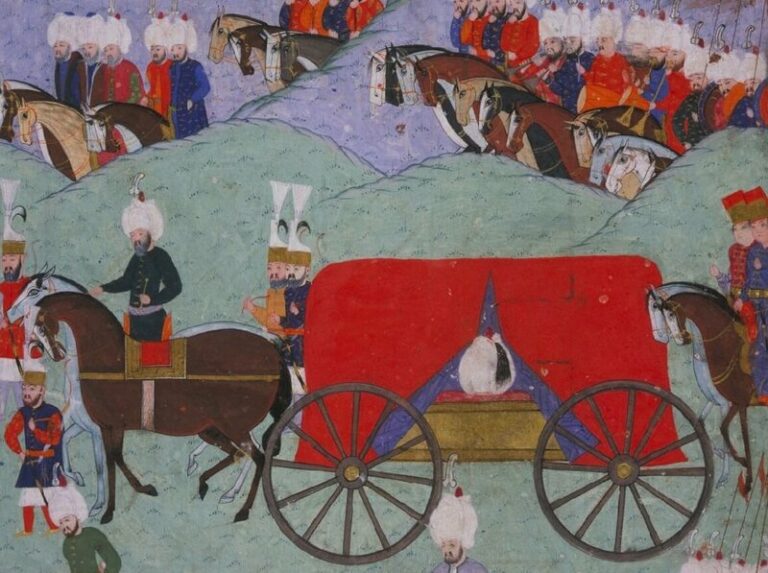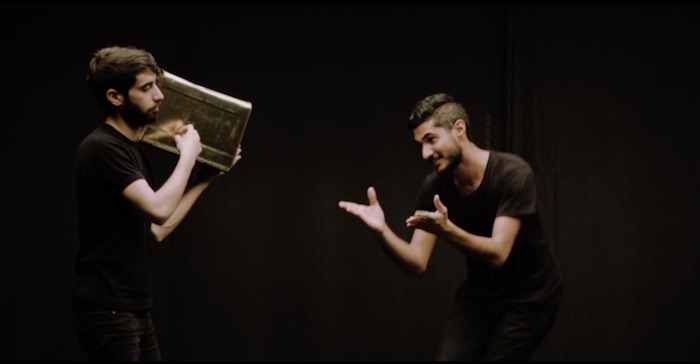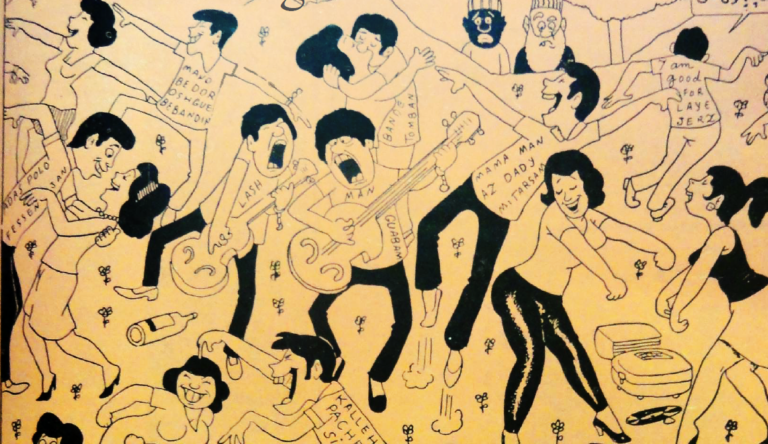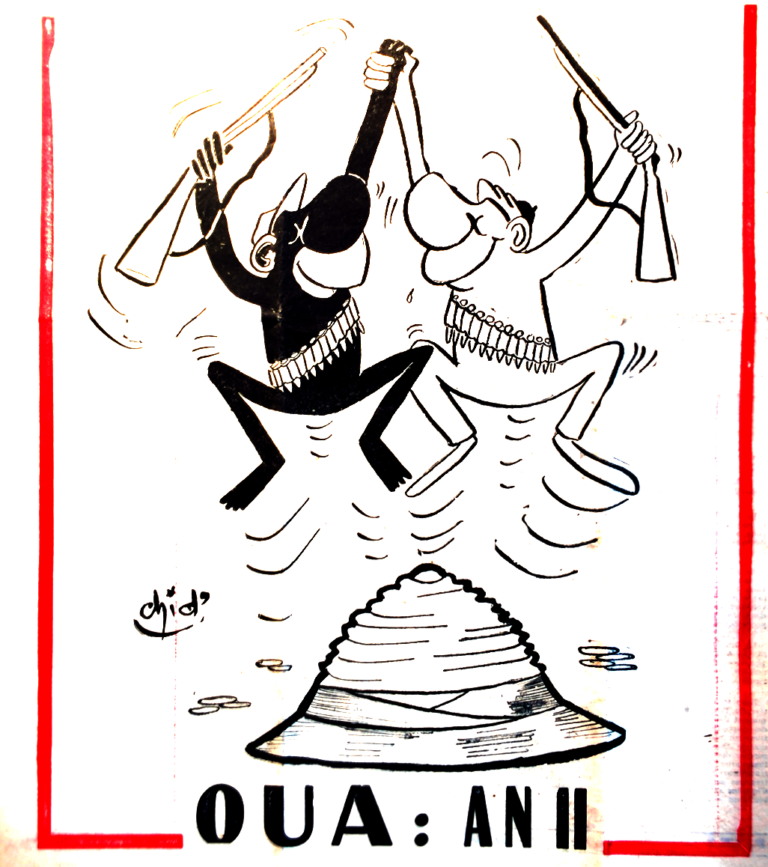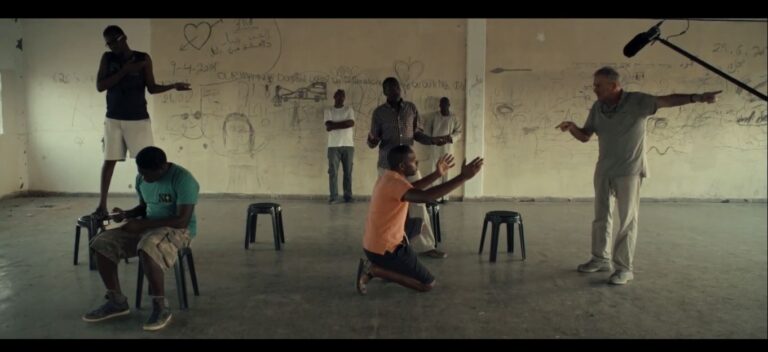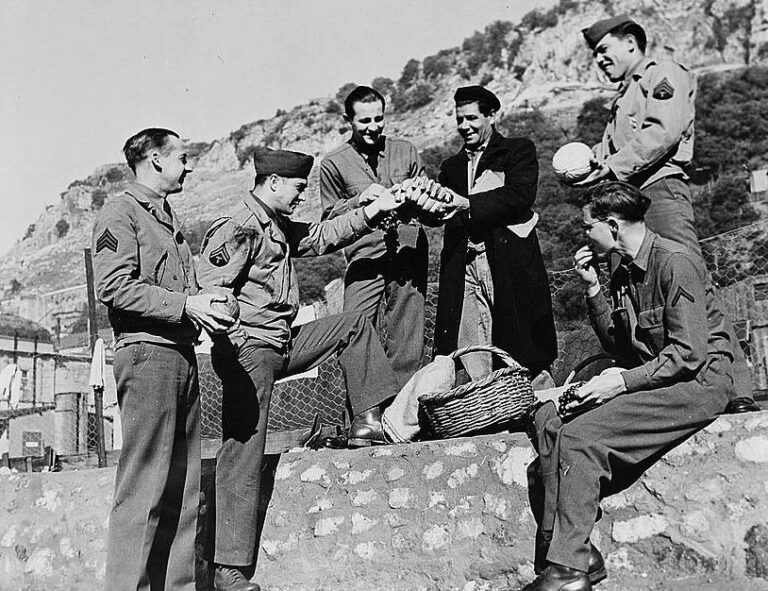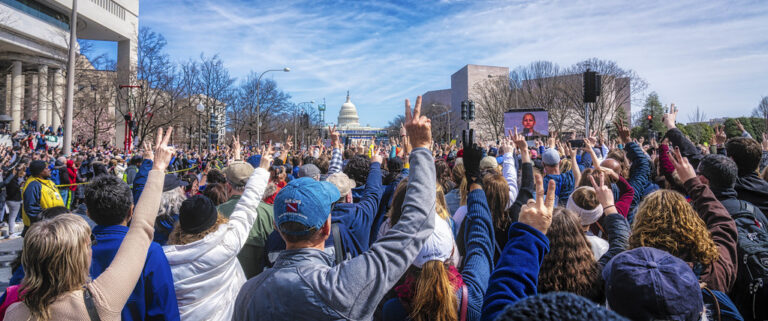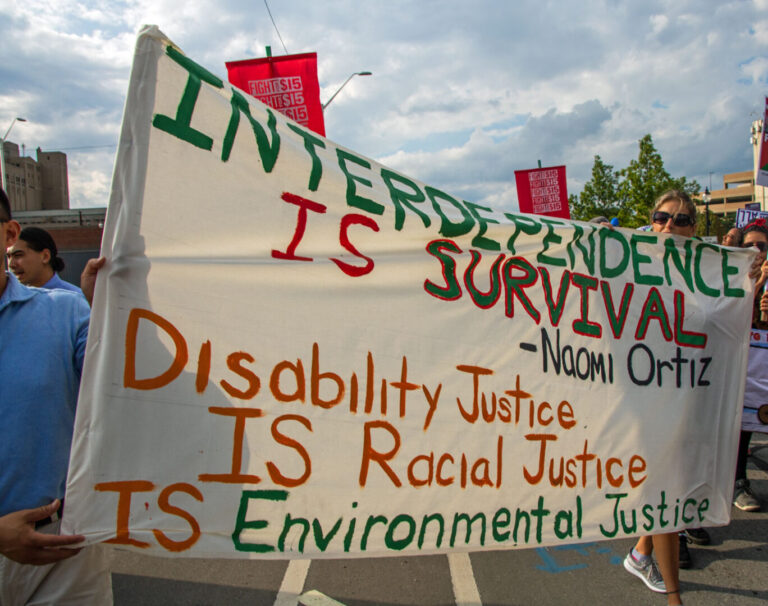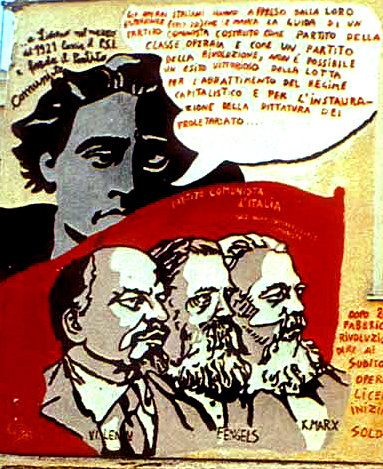This issue marks the tenth year of publishing Lateral. We reflect here on this milestone and highlight work in the current issue, including a new forum on Cultural Constructions of Race and Racism in the Middle East and North Africa / Southwest Asia and North Africa (MENA/SWANA) and a special section on Cripistemologies of Crisis: Emergent Knowledges for the Present. We discuss several of these pieces in relationship to ongoing violence in Israel and attacks in the United States against “critical race theory” and conclude with calls for open access scholarship.
Issue 10.1 (Spring 2021)
Toward an Alaskan Critical Regionalist Pedagogy: Mapping the Cruise Ship Industry through Visual Spatial Tactics
In an era when urban space is theorized as an educative science enhancing productivity, business, and management, we witness the emergence of teaching as a dominant productive force for the first time in the history of capital. Given the decisive role of knowledge production in the development of globalized urbanization it becomes vital to identify critical pedagogies that not only engage the production of space but grasp the production of space as pedagogical. To do so, I attend to interventions into regionalist studies and the global city to argue for visual spatial tactics as a tool for a critical regionalist pedagogy capable of linking material, affective, and discursive practices with a placed-based approach to globalized urbanization. Students design a collaborative website documenting the spatial history of cruise ship tourism in Alaska as an argument over the right to the city. Identifying this living process—framing the cruise industry as a constitutive system fusing discourse, space, and identity to restructure history, nature, and region—becomes a means of questioning and revising otherwise generalized theories often brought to bear on tourist landscapes, on Alaska, and on critical pedagogy itself. This case study shows the emergence of the cruise ship city as inseparable from the onset of globalized urbanization and how it, in turn, provides edifying material to mobilize a critical regionalist pedagogy within contemporary forms of educative landscapes.
“A Program of Complete Disorder”: The Black Iconoclasm Within Fanonian Thought
This essay examines the scholarship of revolutionary theorist Frantz Fanon and the debate surrounding his conception of decolonization and “new humanism.” Across a multitude of fields, Black and cultural studies among them, Fanon has been heralded as an iconic thinker who offers us a path toward an alternative humanity. Working against the grain of this popular form of Fanonism, I suggest that there is a Black iconoclasm—a deep desire to unsettle the very rendering of a systematic path toward decolonization—that pervades Fanonian thought. Accordingly, the essay examines and unsettles various forms of Fanonism by suggesting that their teleological narratives of redemption ultimately end up serving anti-Fanonian pursuits. Through an extended meditation on Fanon’s claim that decolonization is “a program of complete disorder,” I explore what it might mean to embrace a Black iconoclastic approach to Fanon and the pursuit of Black liberation.
Airing Grievances: Academic Hoaxing and the Performance of Boundary Work
Through an examination of the 2018 “grievance studies” hoax this essay considers the role hoaxing plays in the articulation of both internal and external modes of institutional critique that pertain to the production, verification, and dissemination of knowledge. By examining the grievances of three academics who wrote over twenty false/fraudulent articles—seven of which were published in (and later retracted from) peer-reviewed journals—this research attends to the different kinds of boundary work and repair that are performed and enacted by academics to shed light on the conflicting ways knowledge production and academic labour are currently contextualized and understood.
Enacting Law: The Dramaturgy of the Courtroom on the Contemporary Stage
Although historical research into twentieth-century theatrical tribunals is widespread, the recurring theme of justice in contemporary performance practices remains largely unexplored. However, an increasing number of twenty-first-century artists have begun relying on structures of the court. By creating theatrical tribunals, these artists try to create a space for an alternative jurisdiction. However, a clear typology of this tribunal genre in the contemporary performing arts is still lacking. This article therefore aims to characterize theatrical tribunals. In the first section, I describe the setting of the courtroom as a theatrical place in which law gets enacted or performed. Following several scholars that already stated the important spectacular aspects of the legal system, I discuss the dramaturgy of the courtroom as a specific dramatic place with its own scenography, script, and dramatis personae. Next, by analyzing the dramaturgy of the courtroom, I distinguish two categories within the tribunal genre: (1) re-enactments of preeminent lawsuits that heavily rely on twentieth-century documentary practices and (2) performative pre-enactments of futuristic trials that have not yet been held or cannot be held because of systemic shortcomings. Finally I examine how contemporary theatrical tribunals could contribute to the enlargement of public knowledge on historical and contemporary examples of injustice, and whether they could obtain effective changes in our societies.
On Remembering Le premier festival culturel panafricain d’Alger 1969: An Assembled Interview
This assembled interview centers both Elaine Mokhtefi and Le premier festival culturel panafricain d’Alger 1969 (PANAF), a festival which she organized and attended as a part of the Algerian Ministry of Information, noting it as an exemplary instance of the power of performance at the nexus of political ideology, activist history, and the subsequent nostalgia for that era of liberation. It is equally an attempt to overcome a distant relationship to each, reflecting on the potential of oral histories to open up new pathways through the past. This history—of entangled international relations negotiated under the guise of a festive performance, a complicated trajectory of global politics which culminated in a remarkable event of celebration and solidarity—remains understudied, a footnote to more “political” concerns of Third World agendas, decolonial reorderings, and capitalist critiques. Yet through Mokhtefi’s testimony, interwoven with searching tendrils of archival detail, we can see that this festival was not a superficial exaltation in extravagance, but a pivotal moment in foreign affairs. More importantly, through her personal history, we can trace the central role that women played in these politics, if often unacknowledged. Edited in 2020, it also counters the pejorative label of non-essential labor applied to most cultural activities during the contemporary pandemic response to COVID-19.
Forum: Cultural Constructions of Race and Racism in the Middle East and North Africa / Southwest Asia and North Africa (MENA/SWANA)
Edited by Rayya El Zein
This forum is imagined as a tool to deepen the ongoing work of recognizing, naming, and undoing white supremacy, colorism, and anti-Black racism in the Middle East and North Africa / South West Asia and North Africa (MENA/SWANA). This forum asks: what particular textures cohere around whiteness, indigeneity, Arabness, Iranianness, Israeliness, Turkishness, and anti-Black racism in the MENA/SWANA? What are the economic and geopolitical histories and cultural and media lineages that inflect this racism? What histories of slavery and empire specific to the region must be rendered familiar in order to recognize and unravel textures of anti-Black racism in Arabic, Turkish, Persian, and Hebrew-speaking contexts? Finally, how can this analysis, drawn from intimate knowledge of the history of the SWANA, its languages, cultural production, and accompanying structures of feeling be used to deepen and complexify a global struggle against white supremacy and anti-Black discrimination, dispossession, and oppression?Introduction: Cultural Constructions of Race and Racism in the Middle East and North Africa / Southwest Asia and North Africa
In recent years, scholars in the fields of cultural studies, American studies, history, ethnic studies, and Middle East area studies have approached questions of race and racism in this geographic region with renewed critical vigor. Recent work deconstructing anti-Arab racism and Islamophobia in the Americas and Europe has put these patterns of discrimination into intersectional conversation with anti-Black and anti-Indigenous racism. New historical efforts have drawn attention to the legacies of slavery in the Ottoman, Persian, and Arab Empires, working to understand how forms of racialization and racial hierarchization predated and were exacerbated by the arrival of European imperial forces. At the same time, activists in the region draw attention to prevailing racism against migrant laborers, marginalized indigenous populations, and others as the afterlives of colonialism, war, austerity, and revolution carry on. Together, this academic and activist work asks for attention by leaders, community members, and scholars of this region to the particularities of racecraft in the region: How are “Blackness” and “whiteness” constructed in the Arabic, Hebrew, Persian, and Turkish speaking worlds? What are the obstacles to discussing and identifying race particular to the histories of this region, its peoples, and its histories? This forum uses close readings of popular culture and political discourse across the Middle East and North Africa / Southwest Asia and North Africa (MENA/SWANA) in pursuit of these questions and others.
The Myths of Haji Firuz: The Racist Contours of the Iranian Minstrel
Every year, around the arrival of the Spring equinox, Iranians in Iran and in diaspora will recognize a minstrel named Haji Firuz with his Nowruz jingle. The inclusion of Haji Firuz during Nowruz festivities has been questioned and challenged for decades; where some will point out his connections to anti-Blackness, others will defend Haji Firuz, arguing that his face is only covered in soot from fires also associated with the holiday. This article contextualizes these arguments as a part of a larger discourse of denying racism in Iran and, more poignantly, erasing Iran’s history of slavery altogether. This article addresses the consequences and pitfalls of defending Haji Firuz’s blackface performance, and its implications for the broader Iranian community.
An (Un)Marked Foreigner: Race-Making in Egyptian, Syrian, and German Popular Cultures
This essay negotiates the critical tension between race as an analytic and social construct by examining how race becomes socialized in and through the production and presentation of Arab culture in two ethnographic case studies: how Syrian musicians negotiate musical multiculturalism as they integrate into German society and how independent musicians in Egypt navigate the racialized entanglements of national and international security logics that privilege Western foreigners. Both these case studies center the “foreigner” subject as one who embodies proximity to white power and delimits the boundaries of such power. We argue that the category of foreigner is thus a racialized construct that not only complicates the Black–white binary of race relations but strategically evades explicit discourses and practices of racecraft that are violent, discriminatory, and exclusionary. By provincializing critical race theory through the particularities of Arab lived experience, we illustrate how local social categories are entangled with historic legacies of empire and contemporary global logics of racialized difference while remaining sensitive to how conceptions of difference exceed Euro-American categories of race. Our work therefore directs attention towards alternative enactments of racialization within the Global South.
On Blackness and the Nation in Arabic Hip Hop: Case Studies from Lebanon and Libya
In this contribution, Chris Nickell and Adam Benkato think together about the mobilization of Blackness in Arabic hip hop from two different contexts: a rap battle in Beirut, Lebanon and music videos from Benghazi, Libya. In both, hip hop artists confront Blackness with the nation through the Afro-diasporic medium of hip hop. Although the examples we consider here participate, in several ways, in hip hop’s larger generic functions as a globalized Black medium of resistance, they also bolster pre-existing discourses of race and racism, anti-Blackness in particular. We argue that this seeming contradiction—instances of anti-Blackness appearing in an iteration of a Black expressive form—is in fact a feature, not a bug, of the flexible way the genre works. We have paired these two examples, which we describe and analyze individually given their differing social contexts as well as our differing research focuses, in order to glimpse the discursive level at which racecraft functions.
Opposing A Spectacle of Blackness: Arap Baci, Baci Kalfa, Dadi, and the Invention of African Presence in Turkey
The imaging of Africans in Turkey is indicative of the extant register of cultural understanding in the Turkish popular imagination regarding the imaginability, knowability, and understandability of Black form represented. In Turkish popular culture, the figures of the arap baci, baci kalfa, and dadi index this register. This essay takes the representation of Africans on Turkish popular television through the combined usage of blackface-like and drag-like techniques to configure the figures of the arap baci, baci kalfa, and dadi and juxtaposes it against the material ways Turks of African descent have found to figure themselves within the public sphere. This juxtaposition demonstrates how Blackness and Black form are not perennial processes but rather constructed measures that come into relief.
Co-Option and Erasure: Mizrahi Culture in Israel
Much of the rhetoric around racism and racialized discrimination in Israel centers on Israeli Jewish treatment of Palestinians. However, an examination of the experience of Mizrahi Jews can also be instructive as to the ways that racism and white supremacy function within Israel—through a privileging of Ashkenazi Jews, whose experiences are used to define the contemporary Israeli Jewish experience. For example, Israeli Jewish artist of Yemeni descent Leor Grady’s work addresses the marginalization, erasure, and exile of Yemeni Mizrahi Jews in Israel. In his video work Eye and Heart, Grady highlights how, in its absorption into Israeli folk dance, traditional Yemeni dance has been uprooted from its site of origination and “whitewashed.” Through a discussion of this work and others alongside which it was shown in the exhibition Natural Worker, I argue that Grady’s articulation of the co-option of Yemeni culture by the dominant Ashkenazi (white) Israeli mainstream demonstrates how racialization plays out in the cultural realm of Israel. This method of privileging whiteness can be seen in the Israeli co-option of other Mizrahi and Palestinian cultural elements, such as couscous, hummus, and Arabic words such as “yalla.” This examination of Grady’s work allows for an understanding of how this privileging of whiteness functions within the Jewish Israeli context.
Thaumaturgic, Cartoon Blackface
This essay explores how a particular medium—the comic—exposes the limitations of conventional narratives about sīyāh bāzī (Persian blackface) and hājī fīrūz (a famous blackface figure). Many commentators disavow the racial connotations of sīyāh bāzī and hājī fīrūz, concocting pseudo-historical genealogies that link the improvisatory tradition and figure to pre-Islamic practices; commentators thus repress the tradition’s obvious resonances with the history of African enslavement in Iran. Through a close reading of a comic strip from a 1960s Persian periodical, I argue that historicism is an inadequate framework for adjudicating sīyāh bāzī’s racial or “nonracial” character. Instead, I suggest that cartoon Blackness is always already racial, since the comic form depends upon a process of simplification that is at the heart of racialization.
“Incommensurate Ontologies”? Anti-Black Racism and the Question of Islam in French Algeria
In recent years, scholars and activists in France and the United States have questioned whether discrimination against Muslims constitutes a form of racism. In France, some on the left have claimed that religion is a category of belief and therefore should remain separate from discrimination based on skin color or other physical characteristics. In the United States, Afropessimist approaches insist on the specificity of anti-Black racism, rooted in the historical difference between the native and slave. This article, by contrast, argues that race and religion should be studied relationally and highlights how being Muslim exceeded the frame of personal conviction in colonial Algeria, where religious identity was the basis of a political and economic project that were constructed in their wake. The works of Frantz Fanon are particularly instructive in this regard, as he insisted on viewing Blackness as fundamentally relational and also drew on his analysis of anti-Black racism in mainland France to understand the dynamics of settler colonialism in Algeria. The porous line between religious and racial categories also sheds light on discussions of sectarianism in the Middle East more broadly, as colonial regimes irrevocably shaped the contours of the nation-state that were constructed in their wake. Postcolonial sectarianism inherited the intimate relationship between race and religion constructed by empire.
Black Skin, White Cameras: African Asylum-Seekers in Israeli Documentary Film
The recent arrival in Israel of thousands of refugees from countries like Eritrea, Ethiopia, and Sudan has triggered a spate of hate crimes and mob violence. Asked about these asylum seekers in 2012, Likud-party member Miri Regev called them a “cancer.” For this comment, she later apologized—not to the African asylum-seekers but to Israeli cancer survivors, and she expressed regret for comparing them to Africans. Around that same time, Interior Minister Eli Yishai of the Shas Party told a reporter that “this country belongs to us, to the white man.” Continuing on, he stated that he would use “all the tools [necessary] to expel the foreigners, until not one infiltrator remains.” While the racial dynamics of Israel have been thoroughly examined with respect to both intra-Jewish tensions (Ashkenazi supremacy) and the Palestinian issue (white settler-colonialism), in this essay, I want to theorize Israeli whiteness with respect to the African refugees. Specifically, I will examine two recent Israeli documentaries dealing with African refugees—Hotline (dir. Silvina Landsmann, 2015) and Between Fences (dir. Avi Mograbi, 2016). Both openly demonstrate solidarity with the African asylum-seekers, but they do so in different ways, and if the former film leaves the racial hierarchies of Zionism intact, the latter works to shatter them.
What is Whiteness in North Africa?
This entry sketches a matrix for conceptualizing race in/ and North Africa that takes Arabness, indigeneity, Islam, the Sahara, and slavery as orienting keywords. It suggests an approach to a geopolitically-grounded whiteness as social currency and aspiration that is both based in specific regional economic history and also reaches outward toward globally-circulating formations of racial hierarchy. Acknowledging the distinct legal, colonial, and state histories under and through which racialization has proceeded in North and Saharan Africa since the dissolution of the Ottoman Empire, this entry aims to draw out the ethical imaginaries through which bodies have been marked and categorized in this region. These ethical imaginaries have operated through their attendant languages, memories, and performances to enable racisms and colorisms with violent and enduring material consequences. Under the headings “Racialized Enslavement,” “Whiteness and Arabness,” “Race and the Sahara,” and “Race in North African Popular Culture,” I offer brief introductions to these discursive formations, histories, and conceptual intersections and offer suggested readings for each.
Cripistemologies of Crisis: Emergent Knowledge for the Present
Edited by Theodora Danylevich and Alyson Patsavas
This special section considers the critical insights that theorizing experiences of disability, instability, and trauma offer to collective efforts to complicate understandings of the pace and politics of “crisis.” Proposals for submissions to a collection of "evidence" of ephemeral and everyday modes of living and surviving during crisis are invited by August 30, 2021 as described at csalateral.org/upcoming/#cripistemologies
Introduction: Cripistemologies of Crisis: Emergent Knowledges for the Present
The increasing recognition of critical disability studies as a generative body of work across disciplines is inseparable from a collective need to make sense of ongoing moments of socio-political crisis, emergency, and exceptionality. Theorizations of crip time emergent from lived experiences of disability are critical to the ongoing work of understanding and surviving a chronically debilitating socio-political context. Our current political moment seems to protract states of crisis to such a degree that the very notions of emergency and crisis shift under the weight of their simultaneous seeming banality and urgent ubiquity. “Cripistemologies of Crisis: Emergent Knowledges for the Present” contends that epistemologies of chronicity, illness, and trauma offer indispensable lenses through which to rethink—and care for—our collective present. The essays within “Cripistemologies of Crisis” reframe our understandings of both social and personal crisis, and explore how crisis and emergency shape the experiences and knowledges of our bodyminds in time and space. The authors collectively offer an epistemological toolkit to theorize and survive everyday states of trauma, madness, and illness as the lived impacts of such quotidian and ongoing violence. “Cripistemologies of Crisis” asks, then, what crip futures can be conjured through a centering of experiential, collective, and speculative ways of knowing with/in/through crisis.
When Silence Said Everything: Reconceptualizing Trauma through Critical Disability Studies
Reading X González’s, March 24, 2018, “March For Our Lives” speech—their words and silences—as an entry point into what I term a crip theory of trauma, this essay argues that the dominant narratives about and around Post Traumatic Stress Disorder (PTSD) say more about the compulsivity of the “proper” citizen subject than they do the actual embodied experience and debilitation of trauma itself. The text reconceptualizes trauma narratives, like González’s, through critical disability studies to argue that certain cripistemologies—or crip ways of knowing—trauma arise that are not otherwise available or readily accessible. Most notably, by rejecting dominant pathologizing forces and embracing crip ways of knowing, this analysis brings forth a new working definition of trauma, as an embodied, affective structure. These ways of knowing offer crucial insights for efforts to grapple with the ongoing forms of trauma enacted and perpetuated across the globe, and are particularly urgent against a political and cultural landscape that, as my reading of González’s speech makes clear, in many ways refuses to hear, see, and learn from the knowledge that trauma produces.
Solidarity in Falling Apart: Toward a Crip, Collectivist, and Justice-Seeking Theory of Feminine Fracture
In this essay, I reconceptualize feminized trauma by utilizing a queer crip feminist disability justice framework. This reconceptualizing allows for an intervention in both historical psychoanalytic and contemporary biomedical framings of the experience of gendered and sexual violence, pursuant or sequelic trauma, and associated symptoms. Both historical and contemporary psycho-logics too often imagine gendered and sexual violence as abnormal or exceptional events (e.g., “stranger rape”) which can be treated and cured individually, thus delimiting them within a white, wealthy or middle-class, cis- and hetero-feminine register. As a corrective, within the framework of everyday emergencies, insidious traumas, and cripistemologies of crisis, I position feminine fracturing and falling apart as chronic, and consider abolitionist strategies for survival, care, and solidarity beyond traditional medical frameworks for recovery. This further provides a way to understand dissociation or rather dissociative-adjacent symptomology as real, legitimate, and painful, yet also as sociopolitical products experienced differently across diverse populations—and as mundane, banal, and even expected for some. Here, feminine fracturing is symptom, method, and potential avenue for change or liberation. What does “recovery” look like when feminized trauma is endemic to the point of being so normalized and unexceptional as to be a thoroughly unremarkable part of our everyday cultural backdrop? How is this exacerbated when we examine the experiences of trans women, poor women, and immigrant and BIPOC women and femmes? I posit that there is promise in embracing a fracturing, in falling apart—as antidote to the normative and neoliberal logic of keeping it together.
Crip Collectivity Beyond Neoliberalism in Octavia Butler’s Parable of the Sower
The importance of Octavia Butler’s 1993 novel Parable of the Sower continues to crystalize, as Butler’s prescient imagining of urban California torn apart by neoliberal divestment comes to fruition. Following in the space opened up by Black feminist scholarship on Butler, the present essay examines her relevance beyond literary and cultural studies. I argue that Parable is a Black feminist crip theorization of political economy that diagnoses the disabling conditions of precarity under neoliberalism and also prescribes collectivity for crip and mad survival. Neoliberalism describes a global stage of advanced capitalism wherein governments are both incentivized and disciplined into enforcing economic policies that include privatization, deregulation, and market liberalization. As Jodi Melamed defines it, neoliberalism requires a certain kind of political governance, that puts the interests of business over the well-being of people (2011). Neoliberal governance engenders what I call “disabling contradictions,” yet the blame for conditions of precarity is deflected onto bodyminds themselves. In Parable of the Sower, Butler theorizes these disabling contradictions of neoliberal governance under advanced capitalism, drawing into focus the political economic systems that cause suffering. Parable also depicts strategies for crip and mad survival that are made possible through the conscious creation of community and networks of solidarity that counter the neoliberal state’s devaluation of bodyminds. Gathering to read and discuss the novel, rather than a distraction from the crises, furthers the emergence of crip and mad collectivities. As such, it is an urgent and timely practice for building futures for crip and mad people.
Years in Cultural Studies
Edited by Robert W. Gehl
1986—The Marxist Disciplining of the Cultural Studies Project
Since its infancy, the pluralistic tendencies of the cultural studies project denied methodological and procedural consistency and resisted any disciplining of cultural studies as an attempt at authoritarian policing. Over the course of the 1980s, cultural studies continued to spread beyond the United Kingdom to Australia and the United States, initially, and the rest of the world soon thereafter. Movements towards the bridging of the longstanding divisions between fact and interpretation—between the social sciences and the humanities—under the sign of a principled approach to cultural democracy saw the Althusserian Marxism characteristic of earlier cultural studies scholarship expanded by way of a critical re/engagement of the works of Gramsci. This period of ideological critique allowed for a bold intellectual, political commitment to the re/conceptualization of culture as a site of class struggle, hegemonic formation, and structural signification. Particularly, the year 1986 saw major strides in this direction with the publication of monumental manuscripts by Stuart Hall, Ernesto Laclau, and Chantal Mouffe.
